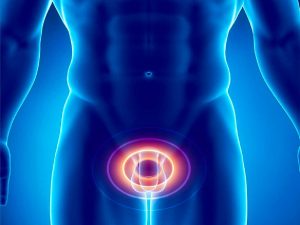According to statistics, about 40% of men with prostatitis symptoms do not seek medical help. At the same time, the consequences of the disease, including the risk of male infertility, are very serious. Find out what symptoms you should see your doctor for and what to do to avoid getting sick.
What is prostatitis
Prostatitis is an inflammation of the prostate gland or prostate, it is one of the most common “male” diseases. Prostatitis is very different, they can occur due to infection and without it, with insufficient sexual activity and with excessive, and so on. This article will help you understand the basic nuances of the disease.
About 10% of men experience symptoms of chronic prostatitis, but only about 60% of them seek medical help (Nickel JC et al, 2001).
Prostatitis affects men of all age groups, and its prevalence continues to grow. Men under 50 years old make up 65.2% of patients, according to various sources, the prevalence of the disease among men as a whole is 13.2-35% (Lummus W.F., 2001; Meares E.M., 1990). According to other data, from 8 to 35% of men aged 20-40 years suffer from inflammation of the prostate (Lokshin K.L., 2013). Among older men, the real picture is “masked” by the incidence of benign prostatic hyperplasia (prostate adenoma), since their symptoms largely coincide. Up to 65% of patients with adenoma are operated on for it with unrecognized prostatitis. (Nickel et al., 2007). Considering that inflammatory diseases of the genital organs are a common cause of male infertility, scientists speak of a threat to the reproductive health of the nation (Zueva T.V., 2013).
Medical services
Andrologist consultation
Urologist’s consultation
Treatment of prostatitis
Diagnostic tests
Prostate secretion analysis
Ultrasound examination of the prostate
What is prostatitis
A simple division into acute and chronic is not enough to characterize prostatitis, the disease includes several syndromes with different clinical course. Consider what forms of the disease are isolated according to the modern classification (Krieger JN et. Al, 1999).
Category I: Acute bacterial prostatitis. A relatively rare species, accounting for only 5% of cases. It is a consequence of urinary tract infection, develops against the background of predisposing factors (impaired urine outflow, suppressed immunity). In 5% of cases, it turns into chronic bacterial prostatitis.
Acute prostatitis
Category II: Chronic bacterial prostatitis. It is also a rare disease that is considered a recurrent urinary tract infection with the main focus in the prostate.
III category: Chronic prostatitis / chronic pelvic pain syndrome. Previously, this disease was called chronic abacterial prostatitis, and it accounts for up to 95% of all diagnosed prostatitis (Habermacher GM, 2006). Chronic pain syndrome combines pathologies characterized by urological pain in the absence of a urinary tract infection. It does not include urethritis, cancers, narrowing of the urethra, neurological damage to the bladder. Divided into categories IIIa and IIIb: with signs of inflammation and without signs of inflammation. These signs are determined by laboratory, primarily by the presence of leukocytes in urine or prostate secretions.
Chronic prostatitis
IV category: Asymptomatic inflammatory prostatitis. It is an accidental finding when examining a patient. It is most often diagnosed when examining men for infertility or an elevated level of the PSA marker in the blood. We do not consider this type of disease in detail, since scientists have not yet developed a unified view of this form (Nickel JC, 2011).
Symptoms of prostatitis
Symptoms of Acute Prostatitis
The disease begins acutely, there is pain in the perineum, the body temperature rises. The urge to urinate is frequent (at least 5-7 per night), urination becomes painful, difficult. Urine comes out in intermittent portions, there is no feeling of satisfaction from urination. Blood may be found in the last portions of urine. The pain is worse with bowel movements. This is a serious illness that requires urgent help.
Complications of acute prostatitis https://en.wikipedia.org/wiki/Prostatitis are:
acute urinary retention;
abscess of the prostate gland (formation of a purulent focus);
paraprostatitis (inflammation of the tissue around the gland, can be caused by a breakthrough of an abscess);
phlebitis of the paraprostatic venous plexus (inflammation in the surrounding veins).
